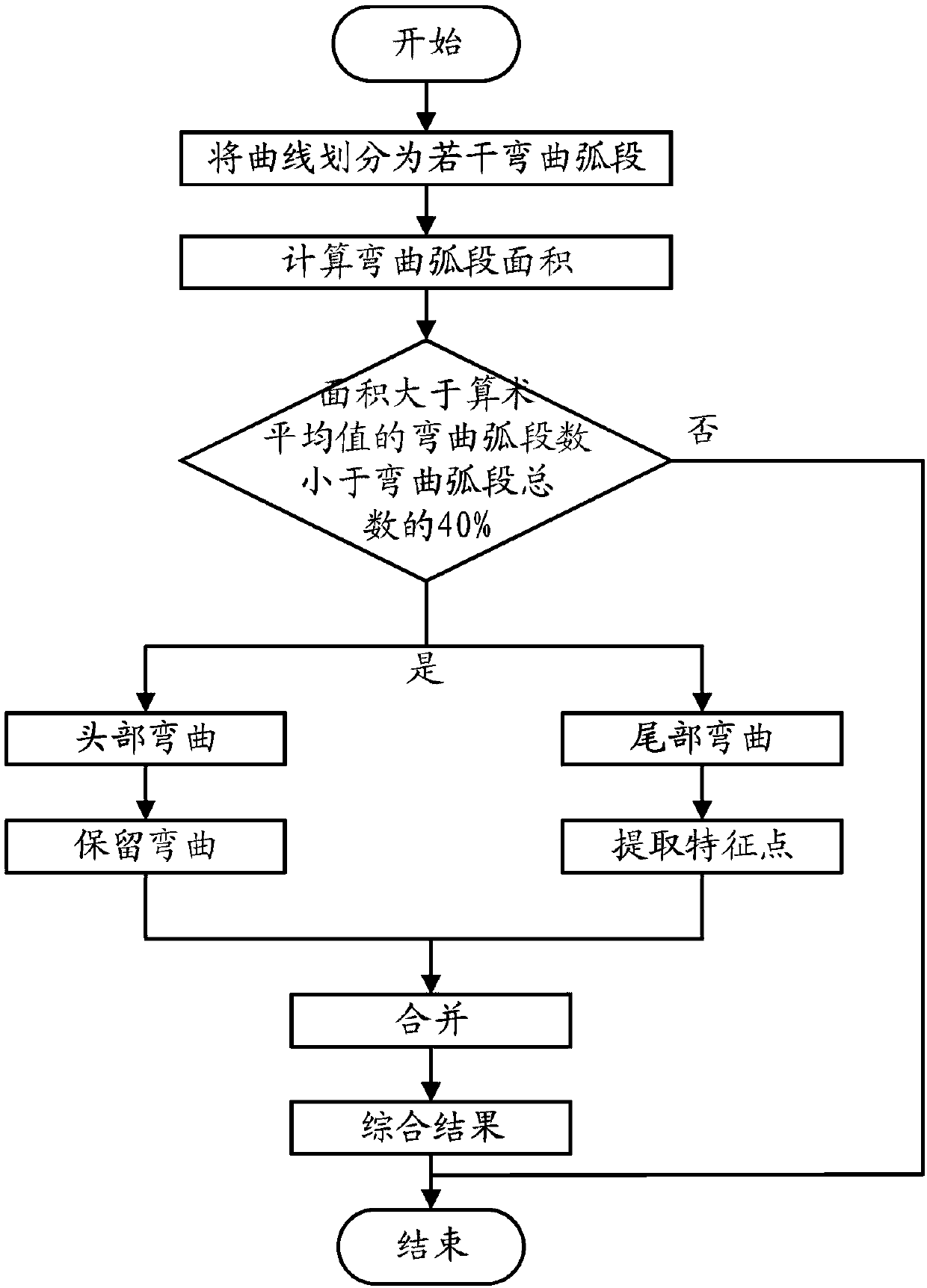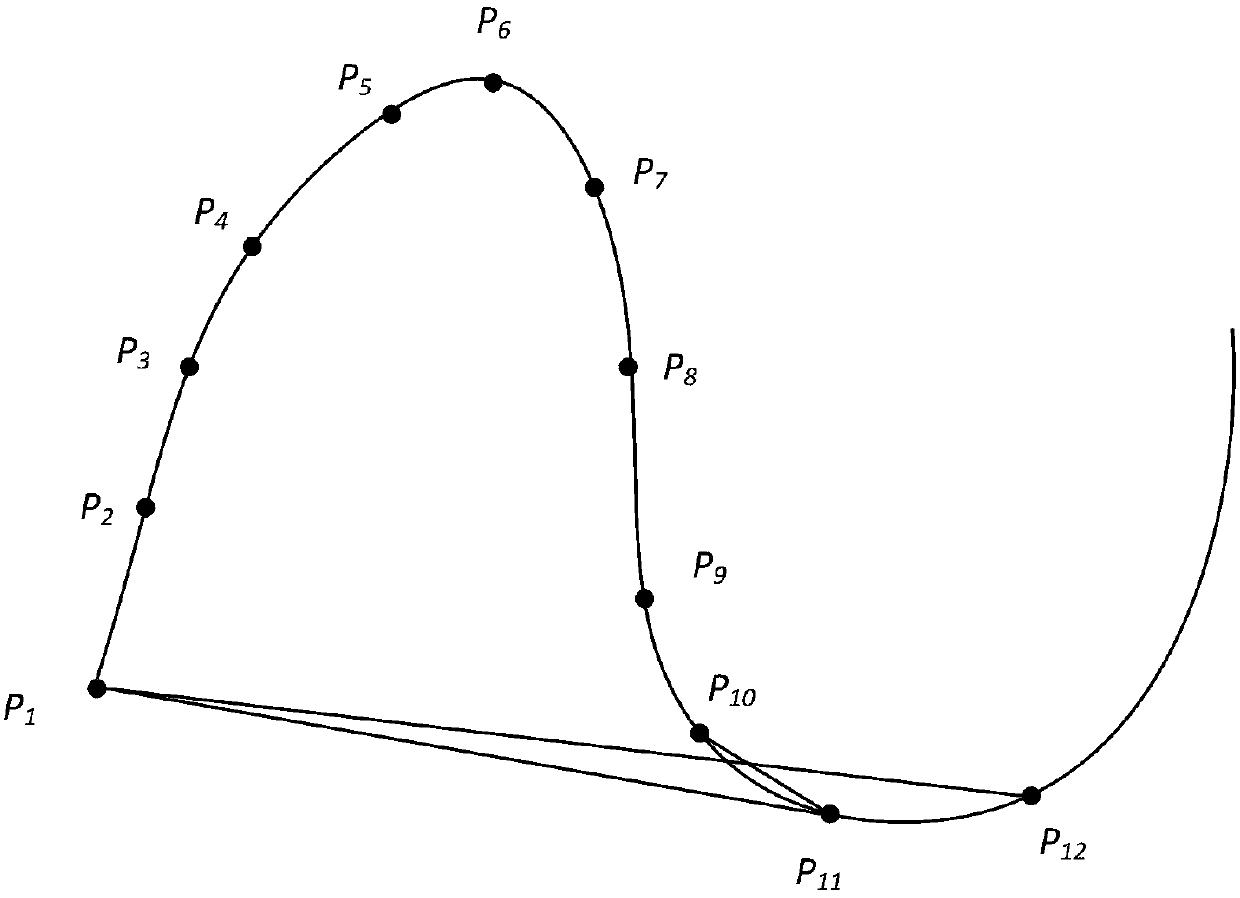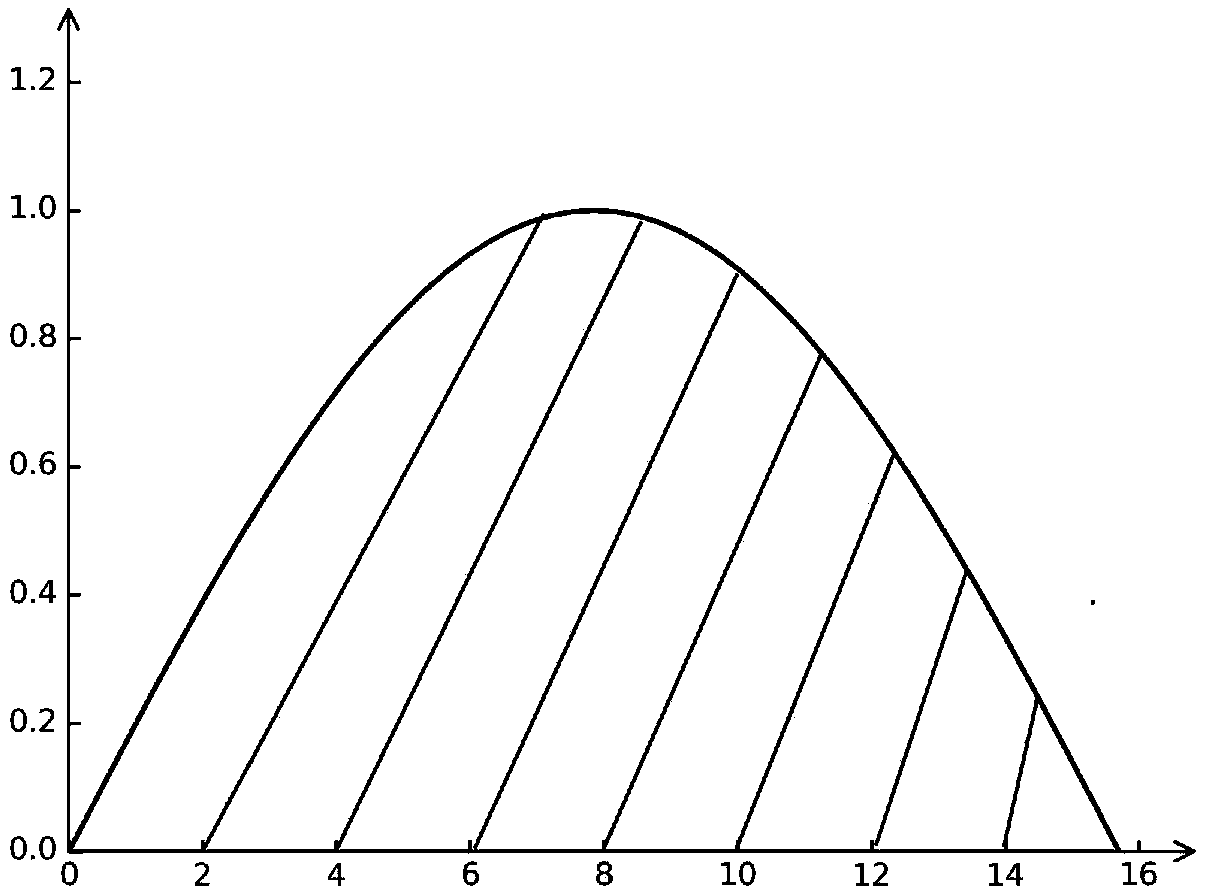Curve simplification method based on a bending area and head and tail fracture classification
A bending and area technology, applied in the field of simplification and compression of vector curve graphics, can solve problems such as neglect of curve shape characteristics, large amount of complex calculation, unreasonable threshold setting, etc. Effect
- Summary
- Abstract
- Description
- Claims
- Application Information
AI Technical Summary
Problems solved by technology
Method used
Image
Examples
Embodiment Construction
[0024] The following will clearly and completely describe the technical solutions in the embodiments of the present invention with reference to the accompanying drawings in the embodiments of the present invention. Obviously, the described embodiments are only some, not all, embodiments of the present invention. Based on the embodiments of the present invention, all other embodiments obtained by persons of ordinary skill in the art without making creative efforts belong to the protection scope of the present invention.
[0025] See attached figure 1 , the embodiment of the present invention discloses a curve simplification method based on the bending area and head-tail fracture classification, including:
[0026] S1: Use the cable-stayed curve division method to divide the curve into several curved arc segments;
[0027] S2: Calculate the area enclosed by the curved arc segment and the line connecting the first and last points;
[0028] S3: Calculate the arithmetic mean of t...
PUM
 Login to View More
Login to View More Abstract
Description
Claims
Application Information
 Login to View More
Login to View More - R&D
- Intellectual Property
- Life Sciences
- Materials
- Tech Scout
- Unparalleled Data Quality
- Higher Quality Content
- 60% Fewer Hallucinations
Browse by: Latest US Patents, China's latest patents, Technical Efficacy Thesaurus, Application Domain, Technology Topic, Popular Technical Reports.
© 2025 PatSnap. All rights reserved.Legal|Privacy policy|Modern Slavery Act Transparency Statement|Sitemap|About US| Contact US: help@patsnap.com



